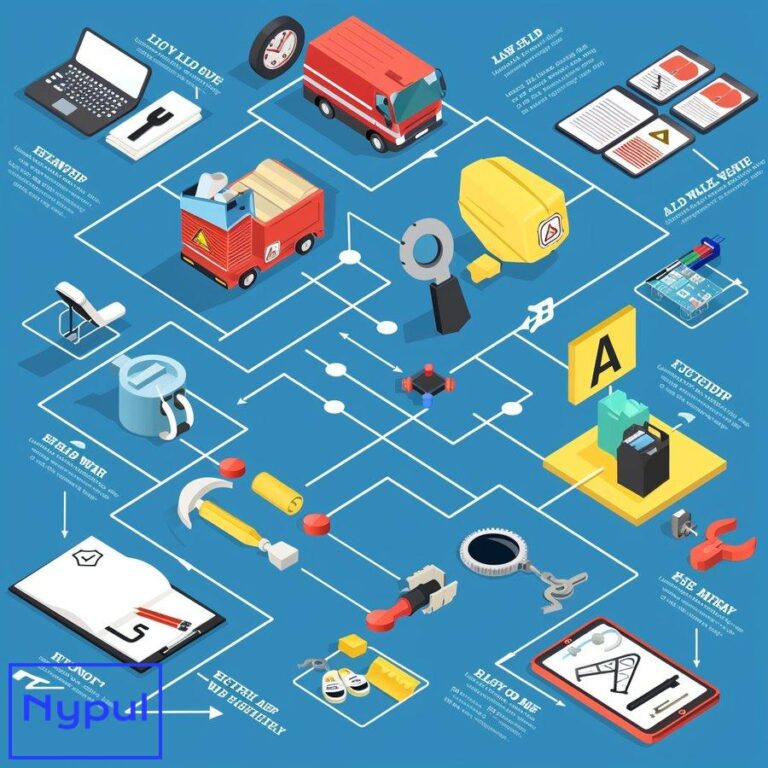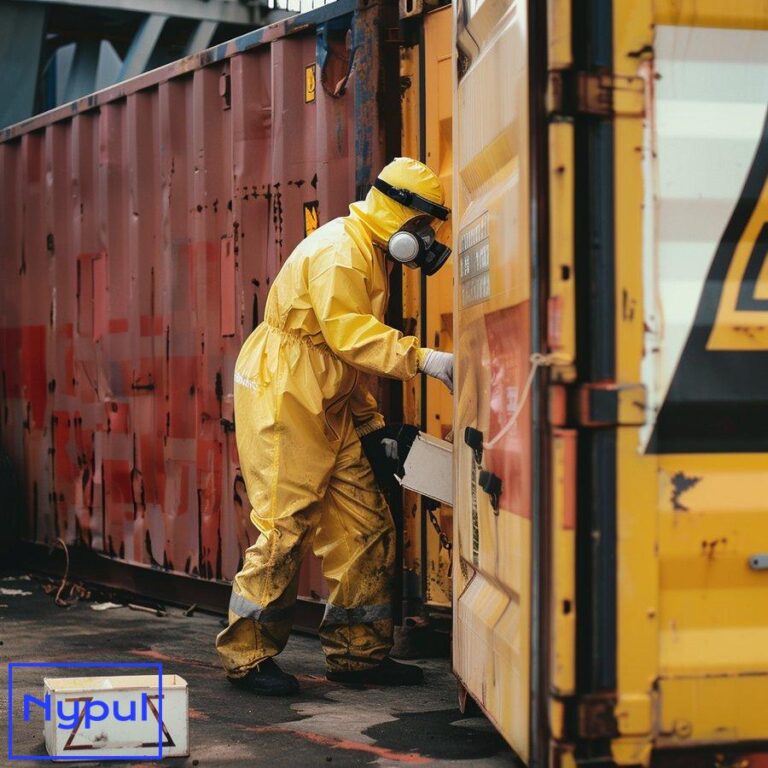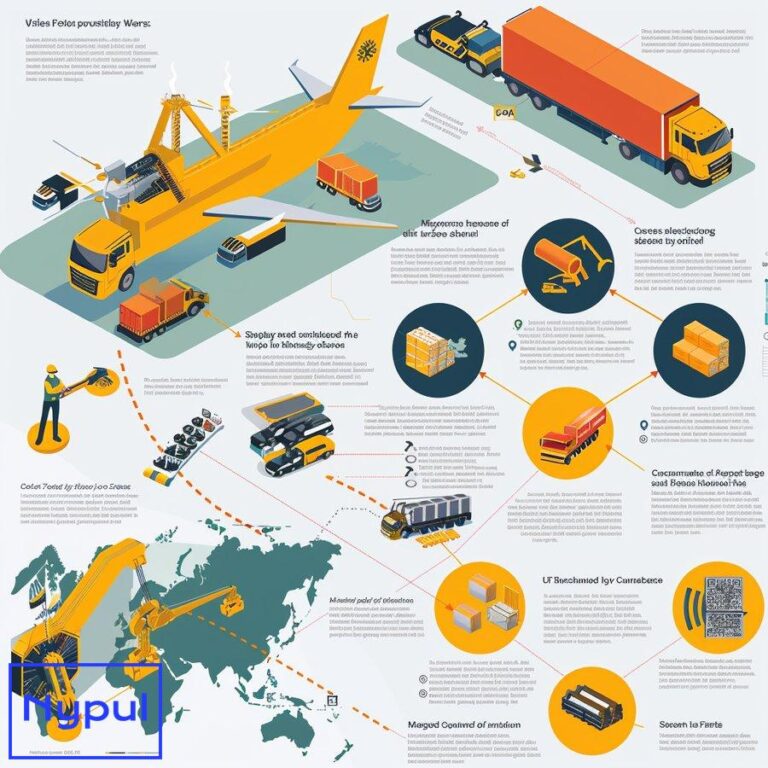What Is the Process of Container Drayage
What is the process of container drayage?
Container drayage is a critical component of the global supply chain, serving as the vital link between ports, rail yards, and final destinations. This complex process involves the short-distance transportation of shipping containers, typically within a single metropolitan area. Understanding the intricacies of container drayage is essential for businesses involved in international trade, logistics professionals, and anyone seeking to optimize their supply chain operations.
What is container drayage?
Container drayage refers to the transportation of shipping containers over short distances, usually between ports or rail terminals and nearby warehouses or distribution centers. This process is a fundamental part of intermodal freight transport, bridging the gap between long-distance shipping and local delivery.
The term “drayage” originates from the historical practice of using “dray” horses to pull heavy loads over short distances. In modern logistics, drayage has evolved to encompass the movement of standardized shipping containers using trucks specially designed for this purpose.
![]()
Types of Container Drayage
Pier drayage: This involves transporting containers from a port to a rail terminal or warehouse within the same metropolitan area. Pier drayage is often the first step in moving goods from ships to inland destinations.
Inter-carrier drayage: This type of drayage occurs when containers are moved between different carriers’ facilities. For example, transferring a container from a shipping line’s terminal to a railroad’s intermodal yard.
Intra-carrier drayage: This refers to the movement of containers between facilities owned or operated by the same carrier. It may involve relocating containers within a port complex or between nearby depots.
Expedited drayage: When time-sensitive cargo needs to be moved quickly, expedited drayage services are employed. This often involves dedicated trucks and priority handling to ensure rapid delivery.
Shuttle drayage: This type of drayage involves the continuous movement of containers between two fixed points, such as a port and a nearby distribution center, to manage high-volume cargo flows.
Key Players in Container Drayage
Drayage companies: These specialized trucking firms own and operate the vehicles used for container transport. They employ skilled drivers familiar with port and terminal operations.
Port authorities: These entities manage port facilities and often coordinate drayage activities to ensure smooth operations and reduce congestion.
Shipping lines: Ocean carriers rely on drayage services to move their containers to and from ports, connecting sea transport with land-based logistics.
Freight forwarders: These intermediaries often arrange drayage services as part of comprehensive logistics solutions for their clients.
Customs brokers: While not directly involved in transportation, customs brokers play a crucial role in facilitating the clearance of imported containers, which is essential for timely drayage.
The Importance of Container Drayage
Container drayage serves several critical functions in the global supply chain:
Connectivity: Drayage bridges the gap between different modes of transportation, enabling seamless intermodal freight movement.
Efficiency: By facilitating the quick transfer of containers between transport modes, drayage helps reduce overall transit times and improves supply chain efficiency.
Cost-effectiveness: Short-distance trucking is often more economical than extending rail or sea routes to final destinations, making drayage a cost-effective solution for last-mile logistics.
Flexibility: Drayage services can adapt to changing port conditions, traffic patterns, and customer requirements, providing a flexible link in the supply chain.
Congestion management: Efficient drayage operations help alleviate port congestion by quickly moving containers out of terminal areas.
Understanding container drayage is essential for anyone involved in international trade or logistics. As we delve deeper into the specific stages of the drayage process, we’ll explore how this crucial service contributes to the smooth flow of goods in our interconnected global economy.
How does the pre-drayage preparation process work?
The pre-drayage preparation process is a critical phase that sets the foundation for successful container movement. This stage involves meticulous planning, documentation, and coordination among various stakeholders to ensure smooth drayage operations.
Booking and Documentation

The pre-drayage process typically begins with the booking of drayage services. Shippers or their representatives, such as freight forwarders, contact drayage companies to arrange for container transportation. During this initial step, several key pieces of information are exchanged:
Container details: This includes the container number, size (e.g., 20-foot, 40-foot), and type (e.g., dry van, refrigerated).
Pickup location: Specific information about where the container will be collected, such as the port terminal or rail yard.
Delivery destination: The final location where the container needs to be transported.
Timeframes: Expected pickup and delivery dates, including any time-sensitive requirements.
Special handling instructions: Information about any special requirements, such as temperature control for perishable goods.
Once the booking is confirmed, the drayage company begins preparing the necessary documentation. This may include:
Bill of Lading: A crucial document that serves as a receipt of goods and a contract of carriage.
Customs documentation: For international shipments, proper customs paperwork is essential to facilitate smooth clearance.
Delivery order: An authorization from the shipping line allowing the drayage company to collect the container.
Terminal release: A document permitting the removal of the container from the port or rail terminal.
Equipment Preparation
Drayage companies must ensure that their equipment is ready and suitable for the upcoming container move. This involves:
Truck inspection: Vehicles are thoroughly checked to ensure they are in good working condition and comply with safety regulations.
Chassis selection: The appropriate chassis (the wheeled frame on which containers are mounted) is chosen based on the container size and type.
Special equipment preparation: For specialized containers, such as refrigerated units, the necessary equipment (e.g., generator sets for power supply) is prepared and tested.
Route Planning and Scheduling
Efficient route planning is crucial for timely and cost-effective drayage operations. Drayage companies consider several factors when planning routes:
Traffic patterns: Historical traffic data and real-time information are used to avoid congested areas and optimize travel times.
Port and terminal schedules: Coordination with port operating hours and terminal appointment systems is essential to minimize wait times.
Delivery windows: Customer-specified delivery timeframes are factored into the scheduling process.
Driver hours of service: Routes and schedules must comply with regulations governing driver work hours.
Customs and Regulatory Compliance
For international shipments, ensuring compliance with customs regulations is a critical part of pre-drayage preparation:
Pre-filing customs documents: Advanced filing of customs information helps expedite clearance processes.
Security protocols: Adherence to security measures, such as those required by the Customs-Trade Partnership Against Terrorism (C-TPAT) program in the United States, is verified.
Hazardous materials handling: For containers carrying hazardous goods, proper documentation and handling procedures are confirmed.
Communication and Coordination
Effective communication among all parties involved is crucial for successful pre-drayage preparation:
Shipper coordination: Drayage companies maintain close contact with shippers or their representatives to confirm details and address any last-minute changes.
Terminal liaison: Communication with port or rail terminal operators ensures smooth container release and pickup processes.
Driver briefing: Drivers are provided with all necessary information, including pickup details, route plans, and special instructions.
Technology Integration
Modern drayage operations leverage various technological tools to streamline the pre-drayage preparation process:
Transportation Management Systems (TMS): These platforms help optimize route planning, scheduling, and documentation management.
Electronic Data Interchange (EDI): EDI facilitates the seamless exchange of information between drayage companies, shippers, and terminals.
GPS tracking: Real-time location tracking enables better planning and provides visibility to all stakeholders.
Mobile apps: Driver-focused applications provide easy access to essential information and enable real-time updates.
The pre-drayage preparation process is a complex orchestration of various activities that lay the groundwork for efficient container movement. By meticulously addressing each aspect of this preparatory phase, drayage companies can minimize potential disruptions and ensure a smooth transition to the actual container pickup and transportation stages.
What happens during container pickup at the port?
The container pickup process at the port is a critical juncture in the drayage operation, marking the transition from maritime to land transportation. This phase involves several intricate steps and requires careful coordination among various parties to ensure efficient and compliant container retrieval.
Port Arrival and Check-In
![]()
When a drayage truck arrives at the port, the driver must first check in at the port’s entry gate. This process typically involves:
Driver identification: The driver presents their credentials, including a Transportation Worker Identification Credential (TWIC) in U.S. ports.
Load verification: The driver confirms the details of the container to be picked up, including the container number and booking reference.
Equipment inspection: The truck and chassis undergo a quick visual inspection to ensure they meet port safety standards.
Terminal Navigation
Once cleared to enter, the driver proceeds to the appropriate terminal within the port complex. Modern ports often use advanced systems to manage traffic flow:
Terminal appointment systems: Many ports now require drivers to have pre-scheduled appointments for container pickup to reduce congestion and wait times.
Yard management systems: These guide drivers to the specific location of their assigned container within the terminal.
Container Locating and Verification
Upon reaching the designated area, the driver must locate and verify the correct container:
Container identification: The driver checks the container number against the provided documentation to ensure an exact match.
Visual inspection: A quick external inspection is performed to note any visible damage or issues with the container.
Seal verification: The driver confirms that the container’s seal is intact and matches the seal number on the documentation.
Container Loading
The process of loading the container onto the truck involves several steps:
Positioning: The truck is positioned correctly under the container handling equipment (e.g., gantry crane, reach stacker).
Lifting and placement: The container is carefully lifted and placed onto the truck’s chassis.
Securing: The container is securely fastened to the chassis using twist locks or other locking mechanisms.
Documentation and Clearance
Before leaving the terminal, the driver must complete necessary paperwork and obtain clearance:
Equipment interchange receipt (EIR): This document records the transfer of the container from the terminal to the drayage company, noting the condition of the container and any exceptions.
Customs clearance verification: For international shipments, the driver confirms that all customs requirements have been met and the container is cleared for departure.
Exit Procedures
As the truck prepares to leave the port, final checks are conducted:
Outgate processing: The driver presents the EIR and other relevant documents at the exit gate for verification.
Final inspection: A last visual check may be performed to ensure the container is properly secured and the truck is ready for road travel.
Challenges and Considerations
Several factors can impact the efficiency of container pickup at ports:
Port congestion: High volumes of traffic can lead to long wait times and delays in container retrieval.
Equipment availability: Shortages of chassis or other necessary equipment can hinder smooth pickup operations.
Documentation issues: Incomplete or inaccurate paperwork can cause delays or prevent container release.
Customs holds: Containers selected for additional customs inspection may face extended delays.
Weather conditions: Adverse weather can slow down or temporarily halt port operations.
Technological Advancements
To streamline the pickup process, many ports are implementing advanced technologies:
Optical character recognition (OCR): Automated systems that can quickly read container numbers and other identifiers.
Radio-frequency identification (RFID): Tags and readers that facilitate rapid identification and tracking of containers and vehicles.
Blockchain solutions: Emerging technologies that promise to enhance transparency and security in container handling and documentation.
Table: Common Issues and Solutions in Container Pickup
| Issue | Potential Solution |
|---|---|
| Long wait times | Implement appointment systems and extended gate hours |
| Equipment shortages | Improve forecasting and equipment management systems |
| Documentation errors | Adopt electronic documentation and pre-filing systems |
| Customs delays | Enhance communication between customs and port authorities |
| Traffic congestion | Develop off-dock container yards and improve port access roads |
The container pickup process at ports is a complex operation that requires careful coordination and attention to detail. By understanding and optimizing each step of this process, drayage companies can improve efficiency, reduce delays, and provide better service to their clients. As ports continue to evolve and adopt new technologies, the pickup process is likely to become even more streamlined, contributing to smoother global supply chain operations.
How is the transportation phase of container drayage managed?
The transportation phase of container drayage is the core of the drayage process, involving the actual movement of containers from the port or rail terminal to their destination. This phase requires careful management to ensure efficiency, safety, and compliance with various regulations. Let’s explore the key aspects of managing the transportation phase of container drayage.
Route Optimization
![]()
Effective route planning is crucial for efficient drayage operations. Drayage companies employ various strategies and tools to optimize routes:
Real-time traffic monitoring: Advanced GPS systems and traffic monitoring tools help drivers avoid congested areas and choose the most efficient routes.
Multi-stop planning: For drayage operations involving multiple pickups or deliveries, sophisticated algorithms are used to determine the most efficient order of stops.
Fuel efficiency considerations: Routes are planned to minimize fuel consumption, taking into account factors such as traffic patterns, road gradients, and vehicle characteristics.
Driver Management
Skilled and well-managed drivers are essential for successful drayage operations:
Hours of Service (HOS) compliance: Drayage companies must carefully schedule drivers to ensure compliance with federal regulations governing work hours and rest periods.
Driver training: Ongoing training programs help drivers stay updated on safety procedures, efficient driving techniques, and the latest regulations.
Performance monitoring: Many companies use telematics systems to monitor driver performance, including factors such as speed, braking patterns, and fuel efficiency.
Vehicle and Container Monitoring
Keeping track of vehicles and containers throughout the transportation phase is crucial:
GPS tracking: Real-time tracking systems allow drayage companies and their clients to monitor the location and progress of shipments.
Temperature monitoring: For refrigerated containers, continuous temperature monitoring ensures that cargo remains within specified temperature ranges.
Security measures: Seal integrity checks and other security protocols are maintained throughout the journey to prevent tampering or theft.
Compliance Management
Adhering to various regulations is a critical aspect of drayage transportation:
Weight limits: Drayage companies must ensure that loaded containers comply with road weight restrictions, which may vary by jurisdiction.
Hazardous materials regulations: Special procedures and documentation are required for transporting containers with hazardous materials.
Environmental regulations: Many ports and urban areas have specific emissions standards that drayage trucks must meet.
Intermodal Coordination
For drayage operations that involve transfers between different modes of transportation:
Rail terminal coordination: Efficient scheduling and communication with rail operators are essential for smooth container transfers at intermodal facilities.
Port-rail shuttles: Some drayage operations involve short-distance shuttles between ports and nearby rail terminals, requiring precise timing and coordination.
Customer Communication
Keeping clients informed throughout the transportation phase is crucial:
Status updates: Regular updates on the container’s location and estimated arrival time are provided to clients.
Exception management: Any delays or issues are promptly communicated, along with proposed solutions or alternative arrangements.
Technology Integration
Modern drayage operations leverage various technologies to enhance transportation management:
Transportation Management Systems (TMS): These comprehensive platforms help coordinate all aspects of drayage operations, from dispatch to billing.
Mobile applications: Driver-focused apps provide real-time communication, navigation assistance, and electronic logging of hours of service.
Automated dispatching: AI-powered systems can optimize driver and equipment assignments based on real-time conditions and requirements.
Risk Management
Mitigating risks during the transportation phase is a key consideration:
Insurance coverage: Comprehensive insurance policies protect against potential damages or losses during transit.
Contingency planning: Drayage companies develop and maintain plans for handling various scenarios, such as equipment breakdowns or severe weather events.
Safety protocols: Strict safety measures are implemented and enforced to prevent accidents and ensure the well-being of drivers and other road users.
Performance Metrics and Continuous Improvement
To maintain and enhance the efficiency of drayage operations, companies focus on key performance indicators (KPIs) and continuous improvement:
On-time performance: Tracking and improving the percentage of containers delivered within the agreed timeframe.
Dwell time reduction: Minimizing the time containers spend idle at various points in the drayage process.
Fuel efficiency: Monitoring and optimizing fuel consumption to reduce costs and environmental impact.
Customer satisfaction: Regularly assessing and improving client satisfaction through surveys and feedback mechanisms.
Table: Key Challenges and Solutions in Drayage Transportation Management
| Challenge | Solution |
|---|---|
| Traffic congestion | Real-time route optimization and off-peak hour operations |
| Driver shortages | Improved working conditions and recruitment strategies |
| Equipment utilization | Advanced asset management systems and predictive maintenance |
| Regulatory compliance | Automated compliance monitoring and regular training programs |
| Environmental concerns | Adoption of cleaner technologies and eco-driving practices |
The transportation phase of container drayage requires a holistic approach to management, integrating various aspects of logistics, technology, and regulatory compliance. By focusing on efficiency, safety, and customer satisfaction, drayage companies can navigate the complexities of short-distance container transport and contribute to the overall effectiveness of the global supply chain.





